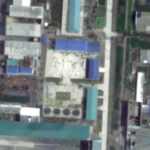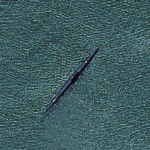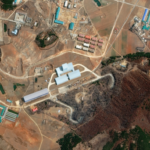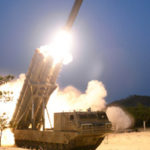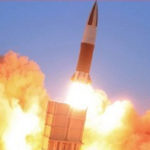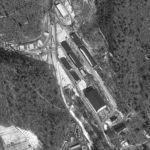September 8, 2020, by Joseph S. Bermudez Jr. and Dana Kim—
The Hungnam Fertilizer Complex has long been associated with producing chemical feed stocks or agents for North Korea’s nuclear weapons, chemical weapons and ballistic missile programs. Any modernization or improvement in its production capacities warrant close monitoring as they have the potential to support or augment WMD capabilities.
September 4, 2020, by Joseph S. Bermudez Jr. and Victor Cha—
A satellite image of the Sinpo South Shipyard acquired on September 4, 2020 shows some activity within the secure boat basin that is suggestive, but not conclusive, of preparations for an upcoming test of a Pukguksong-3 submarine launched ballistic missile (SLBM) from the submersible test stand barge based here.
May 5, 2020, by Joseph S. Bermudez Jr.—
In a joint baseline analysis with Jane’s Intelligence Review, the Center for Strategic and International Studies surveys a previously undisclosed facility near Pyongyang International Airport in North Korea that is likely related to its expanding ballistic missile development program.
March 30, 2020, by Victor Cha—
On March 29, 2020 at 6:10 am KST, North Korea launched two projectiles speculated to be short-range ballistic missiles from the Wonsan area in Kangwon province into the sea between Korea and Japan. The missiles traveled a distance of 230 kilometers (143 miles) and reached a peak altitude of 30 kilometers (19 miles). An announcement published in North Korean state media the following day confirmed that the two missiles were launched as part of super-large multiple rocket launcher tests. It also stated the test was carried out by the Academy of Defence Science.
March 23, 2020, by Victor Cha and Dana Kim—
On March 21, 2020 North Korea launched two projectiles from Sonchon county in North Pyongan province towards the East Sea. The launches took place 5 minutes apart at 6:45am and 6:50am KST, respectively. The projectiles traveled a distance of 410km (255 miles) at a maximum altitude of 50km (31 miles) and closely resemble the KN-24 short-range ballistic missile system. This is the third event of Q1 in 2020, which is equivalent to the number of missile provocations in Q1 of 2017 during the “Fire and Fury” era.
March 2, 2020, by Victor Cha and Dana Kim—
On March 2, 2020 at 12:37pm (KST), North Korea launched two short-range projectiles from the Wonsan, Kangwon Province area towards the East Sea. The projectiles traveled a distance of 240km (150 miles) at a maximum altitude of 35km (22 miles) with a 20-second interval between the two launches. While the exact type and model of the projectiles are yet to be confirmed, considering the nature of the test they may be SRBMs or new surface-to-surface missiles. The short interval time also indicates that the event may have been a multiple rocket launcher system test.
February 14, 2020, by Joseph S. Bermudez Jr. and Victor Cha—
Satellite imagery acquired on February 14, 2020 shows that the three specialized railcars identified in Beyond Parallel’s report from February 11, 2020 have been moved from west of the Radiochemistry Laboratory to the southern rail yard adjacent to the reported isotope/tritium production facility.
A fourth railcar is present in the latest imagery in addition to the three railcars that were captured in imagery from February 10, 2020.
These railcars have been associated with the movement of radioactive material in the past.
If past practice is any indication, all four cars will leave the Yongbyon facility sometime during the next seven days.
January 14, 2020, by Joseph S. Bermudez Jr. and Victor Cha—
A new facility in Ippul-tong is speculated to be a storage facility for ballistic missile transporter-erector-launchers (TELs), mobile-erector-launchers (MELs), or transporter-erectors (TEs). However, there is no conclusive evidence that the facility is also involved in supporting ballistic missile or weapons development activities.
December 20, 2019—
The CSIS Beyond Parallel team compiled an original database of all North Korean provocations since the Korean War in 1953, beginning with the first provocation documented in 1958. There has been more than 280 instances of provocations, including from missile and nuclear tests, airplane hijackings, bombings, exchange of fire, to infiltration and territorial incursions into South Korea.
December 19, 2019, by Joseph S. Bermudez Jr. and Victor Cha—
The Chamjin-ni vertical engine test stand appears to be minimally maintained but apparently capable and available for engine testing at any time.
It is North Korea’s oldest known test stand, developed in the 1980s. There is no evidence of recent tests. This is indicated by the absence of scarring in the exhaust deflector and color-infrared imagery showing healthy vegetation at the end of the exhaust deflector.
